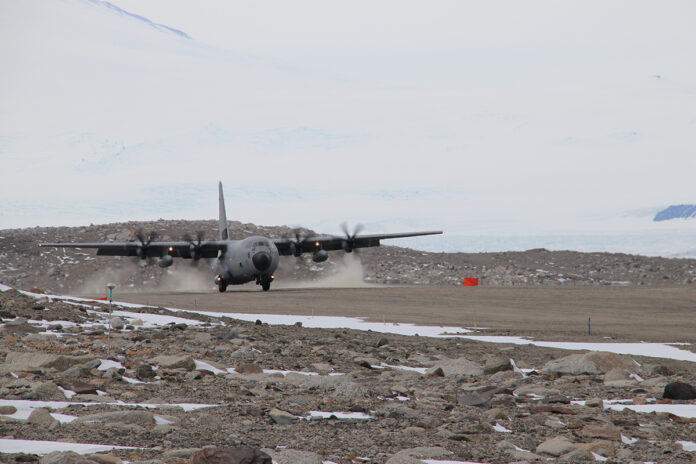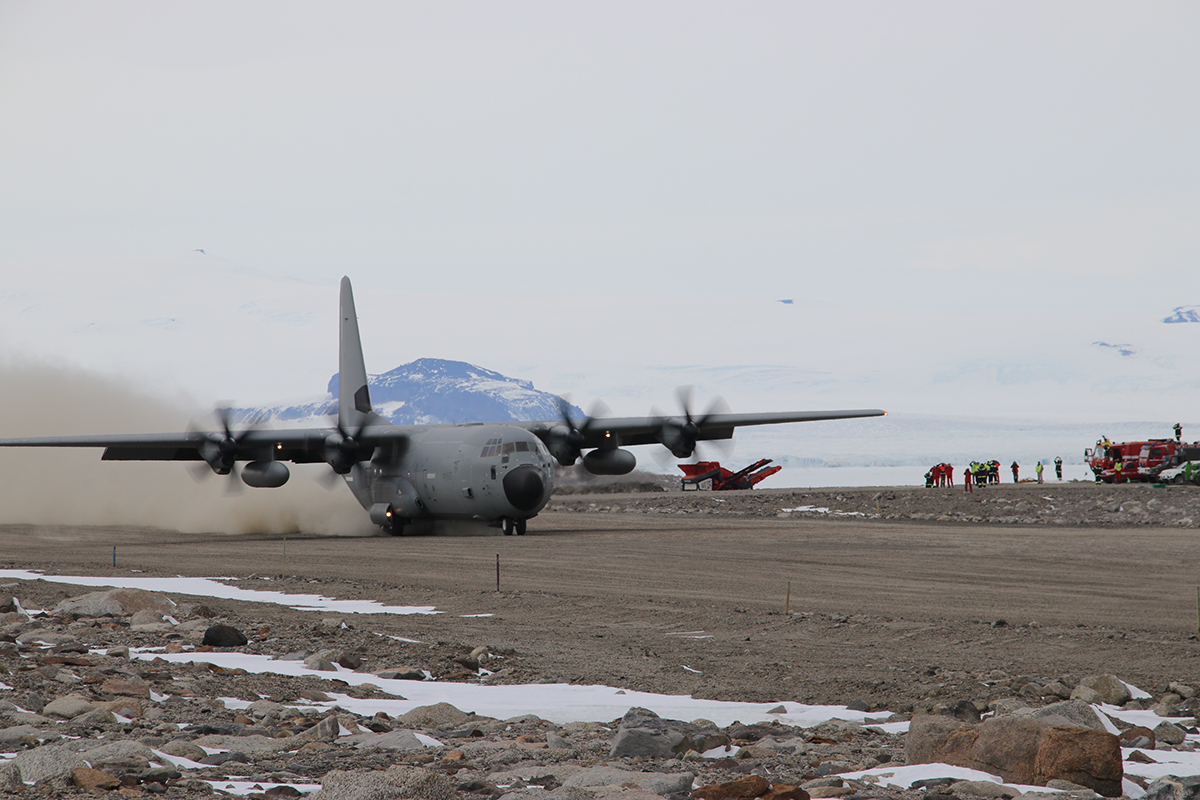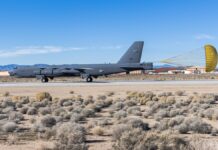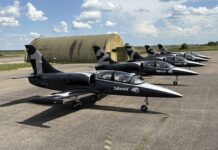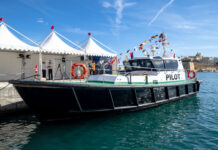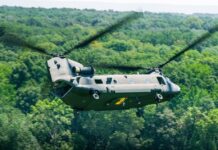First test landing yesterday on the new Antarctic airstrip designed and built by ENEA and the Italian Air Force, in collaboration with the Fire Brigade, thanks to dedicated funding from the Ministry of University and Research. At 4.30 am Italian time, a C-130J of the 46th Air Brigade of the Air Force successfully made its first landing on the semi-prepared runway destined to become an international hub in Antarctica at the service of scientific research, not only Italian.
The flight carried materials and food to deal with the emergency caused by the reduced thickness of sea ice, which this year did not allow large aircraft to land on the pack in front of the Italian Mario Zucchelli coastal base in Terranova Bay.
“This airstrip will make it possible to increase the reliability, flexibility and safety of the logistic operations of the PNRA – National Antarctic Research Programme, it is an important resource also for the other Antarctic programs that find themselves operating in the Ross Sea. The Antarctic Programs of New Zealand and South Korea have already expressed their strong interest in collaborating and this infrastructure which will also be able to support the activities of the United States Antarctic Program”.
Elena Campana, head of ENEA’s Antarctic Technical Unit
60 meters wide and completed for the first 1,700 meters out of the 2,200 envisaged by the project, the track was built for the first time on a moraine, taking advantage of the debris deposits that dominate Boulder Clay, a glacier over 100 meters thick, located 4 km from Zucchelli station. The works that will make the runway fully operational starting from the next Antarctic expedition will be completed in the coming months.
“The Air Force played a fundamental role in both the design and construction of the Boulder Clay runway, also thanks to the on-site deployment of numerous earthmoving machines supplied to the AM Logistics Command Infrastructure Service. This is a unique project in the world of its kind, extremely complex due to the severity of the Antarctic context and the site in which it stands, which required a long preliminary activity of study and monitoring of structural stability, carried out together with ENEA and PNRA researchers to verify the suitability for landing and take-off of the various categories of aircraft – he adds – the runway structural resistance indexes are constantly monitored both by the Geotechnical Laboratory of the 2nd Engineering Department AM and by ENEA”.
Lieutenant Colonel Antonello Germinario, Air Force engineer officer
Specifically, the airstrip is made up of superimposed layers of material found on site: the foundation is made up of coarse stone material while the upper ones are instead made of material with gradually decreasing grain size using the Air Convection Embankment (ACE), the which favors the convection of air inside the structure, protecting the underlying moraine/glacier system from overheating during the summer.
“Sea ice provides a suitable surface for air operations, but is unreliable over time. First of all, it can only be used for a limited period of the year, no more than a month at the beginning of the austral summer, before seasonal heating makes it unsuitable for this type of activity. This year the prolonged and intense katabatic winds combined with the severe sea storms that occurred in the area prevented the ice from reaching the minimum thickness that would allow us to set up an airstrip on the pack ice, forcing us to divert air operations to the US base in McMurdo. A gravel track, also from a future point of view, solves this problem. The Air Force flight at Boulder Clay represents the technical test in view of the putting into operation of the infrastructure next year”
Gianluca Bianchi Fasani of ENEA
The Italian missions in Antarctica are financed by the Ministry of University and Research within the framework of the PNRA, with ENEA managing the logistical organization and the Cnr in the role of scientific planning manager. The 38th Italian expedition to Antarctica got underway in October and involves a total of 240 technicians and researchers – including 23 operators and specialists from the Army, Navy, Air Force and Arma dei Carabinieri made available by the Defense – engaged in 50 projects mainly focused on atmospheric sciences, geology, paleoclimate, biology, oceanography and astronomy. The Air Force, in particular, also contributes with a C-130J aircraft.
“The semi-prepared airstrip in Antarctica makes us particularly proud, in this example of institutional collaboration, unexplored problems have been tackled and successfully resolved, allowing the technical bodies of our Infrastructure Service to acquire extraordinary experience which will contribute to expanding their range of skills in the construction of so-called semi-prepared slopes in support of the ‘operability of the Air Force”.
Brigadier General Mario Sciandra, Head of the Infrastructure Service of the Air Force Logistics Command.


